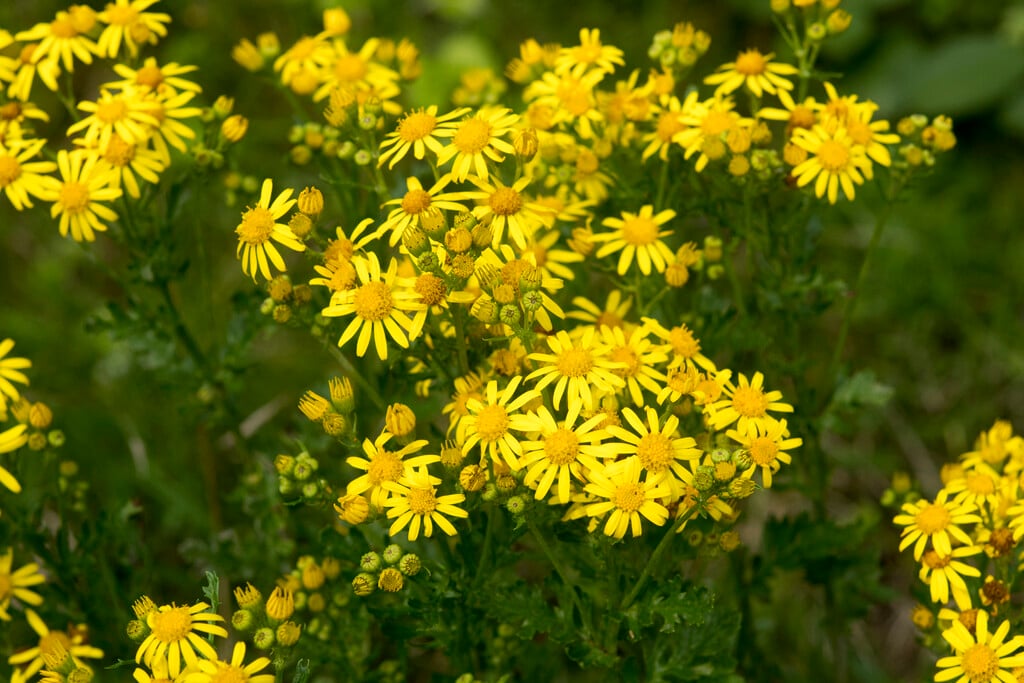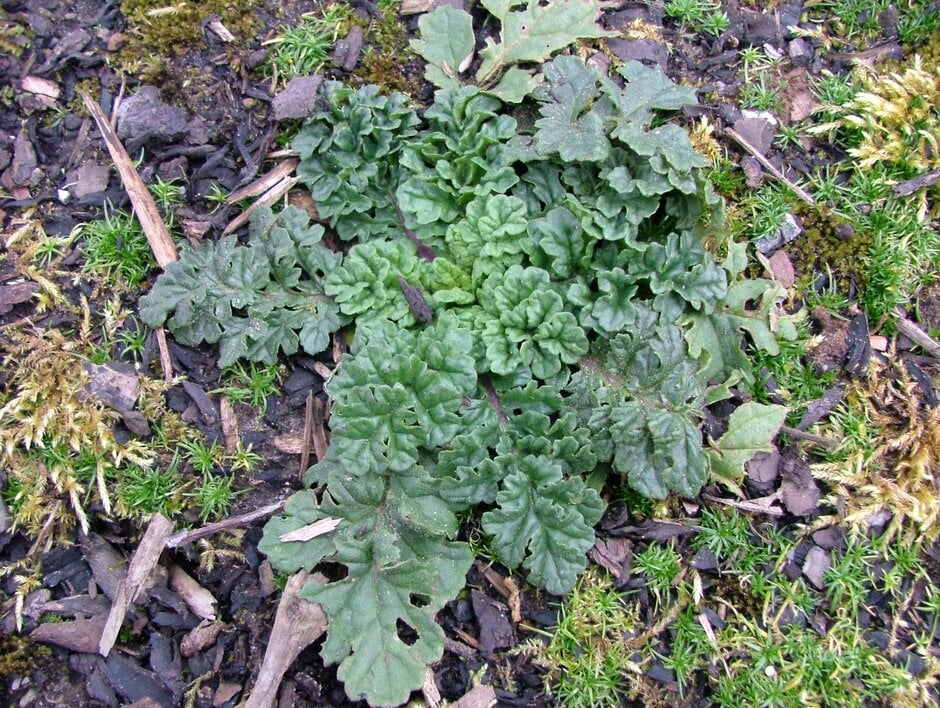Jacobaea vulgaris
common ragwort
An upright biennial or short-lived perennial capable of reaching 1.5m tall, though often much less, with deeply lobed, dark green leaves, often overwintering as a low rosette. Large, flat-topped clusters of yellow, daisy-like flowers appear from mid-summer to mid-autumn
Other common names
benweedbinweed
see moreboliaum
cankerweed
common ragweed
fairy's horse
fellon weed
felon weed
keddledock
kettledock
ragweed
ragwort
Saracen's compass
St James' weed
St James' wort
staggerwort
starwort
stinking Willy
tansy ragwort
yellow tops
fireweed
Synonyms
Senecio jacobaeaSize
Ultimate height
1–1.5 metresTime to ultimate height
2–5 yearsUltimate spread
0.5–1 metresGrowing conditions
Moisture
Moist but well–drained, Well–drainedColour & scent
| Stem | Flower | Foliage | Fruit | |
| Spring | Green | |||
|---|---|---|---|---|
| Summer | Yellow | Green | ||
| Autumn | Yellow | Green | ||
| Winter |
Position
- Full sun
Aspect
South–facing or West–facing
Exposure
Exposed or Sheltered Hardiness
H7Botanical details
- Family
- Asteraceae
- Native to GB / Ireland
- Yes
- Foliage
- Deciduous
- Habit
- Clump forming, Columnar upright
- Potentially harmful
- Poisonous to horses and cattle
- Genus
A genus of around 35 species of native, flowering biennial or perennial herbaceous plants, previously grouped as Senecio and more commonly known as Ragwort. Stems are upright, foliage pinnate and lobed and clusters of flowers bright yellow and daisy-like in appearance. Although primarily known as being toxic to horses and cattle, it is also a valuable food source for pollinators
- Name status
Correct
How to grow
Cultivation
Grows naturally in grassland and waste ground, on roadsides and sand dunes. A problem weed in paddocks, and gardens bordering grazing land or land used to grow forage, as it is poisonous to horses and other livestock. Otherwise it is a good plant for wildlife, attracting a range of pollinators and providing the main food plant for cinnabar moth caterpillars. See ragwort for more information
Propagation
Spreads readily by seed, also by offsets and root fragments
Suggested planting locations and garden types
- Wildlife gardens
- Wildflower meadow
Pruning
No pruning needed. Cutting back is not an effective control method
Pests
Generally pest free
Diseases
Generally disease-free
Love gardening
Sign up to receive regular gardening tips, inspiration, offers and more
View our Privacy Policy
Get involved
The Royal Horticultural Society is the UK’s leading gardening charity. We aim to enrich everyone’s life through plants, and make the UK a greener and more beautiful place.

